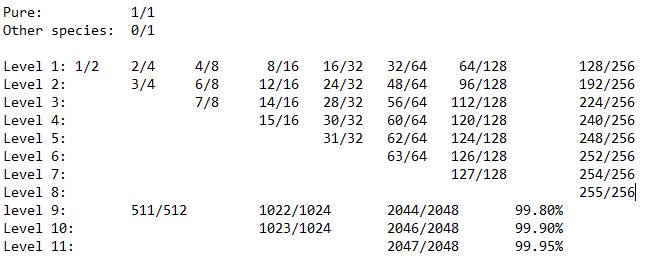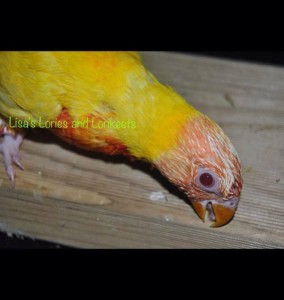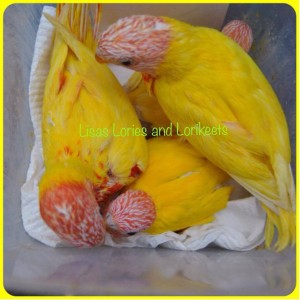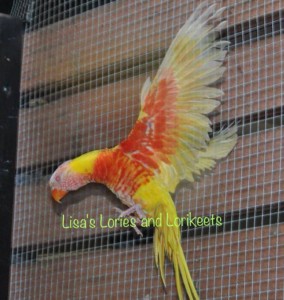LUTINO RAINBOW LORIKEETS – WHERE DID THEY COME FROM ?
AQUA JADE LUTINO
Every one that visit’s our aviaries love the ‘yellow’ rainbow lorikeets. Yellow in aviculture is referred to as ‘lutino’.
Lutino in rainbows unlike most of the other mutation colours in rainbows is not a naturally occurring mutation.
Lutino in rainbow lorikeets originated some 20 years ago with the crossing of the very rare naturally occurring lutino scalie breasted lorikeet to a rainbow lorikeet.
The first cross between two species are known as ‘hybrids’. As a way to identify the birds purity the fraction system is used and these first cross hybrids would be represented as 50/50 meaning 50% scalie and 50% rainbow.
The only way to increase the rainbow genetics and decrease the scalie genetics is to continue breeding the hybrid offspring once sexually mature to PURE normal rainbow lorikeets.
As the lutino gene is a sex linked gene this process is quite lengthy. Once the offspring reach sexual maturity the split lutino cocks have to be put with a normal hen and lutino hens have to be put with normal cocks. This has to be done with as many unrelated pairs as possible to prevent inbreeding and have enough unrelated offspring carrying the lutino gene to enable pairing when older. All pairings when the hen is lutino gives split lutino cock offspring. When pairing split lutino cocks to normal hens, offspring will be lutino hens, normal hens, split lutino cocks and normal cocks.
The catch is there is no visual way of knowing if the cock offspring is split lutino or not because they are a normal coloured bird. Depending on the pairing of the parents, cocks are known as ‘possible splits’ and cannot be confirmed split lutino until they reach sexual maturity and actually produce lutino at which time they are then guaranteed split lutino.
I have found when explaining the lutino genetics with rainbows it can be quite confusing for people to understand the fraction system, so I prefer to explain using a level system. The higher the level number the higher the genetic purity to rainbow.
With each generation being bred to normal rainbow’s the purity increases by one level. Where people go wrong is by pairing lutino to lutino which produces offspring at the same level or lower level than parents rather than increasing the purity level. When purchasing Lutino rainbow’s or red collars the level of purity should be provided by the seller, if it is not then they probably don’t know and the birds are more than likely a lower level of purity.
PURITY LEVEL CHART
Here at Lisa’s Lories and Lorikeets we are currently producing Lutino Rainbows at Level 9 which represents offspring that now contain only 0.2% scalie breasted lorikeet genetics.
DOUBLE DARK FACTOR JADE ( TRUE OLIVE ) or TRIPLE JADE LUTINO LEVEL 9.
VARIOUS MULTI MUTATION COLOUR LUTINO’S BEING HAND REARED
We have Level 9 birds now at breeding age and will be producing offspring at Level 10 in the very near future.
Level 9 Lutino Rainbows currently being produced also include multi-colour mutation birds combining Aqua, Jade, Olive, Dilute and Pied.
Other mutation colours currently being added and developed in combination to above is melanistic.
Imagine a single rainbow lorikeet containing all these mutation colours, it is possible and it’s not that far away.
When hybridising live stock for example horses, cows, dogs etc., the breeders in these fields use level 5 or 31/32 as a measure for purity. We have far exceeded level 5 and in fact have doubled this level of purity which is evident in the quality, size and consistency of birds being produced at these higher levels.
It has been a 16 year labour of love to achieve these high levels of purity that has consumed considerable time and dedication, but looking at the end result is very rewarding.
Lisas Lories and Lorikeets




